House Entrance Pole (RBCM 2308)
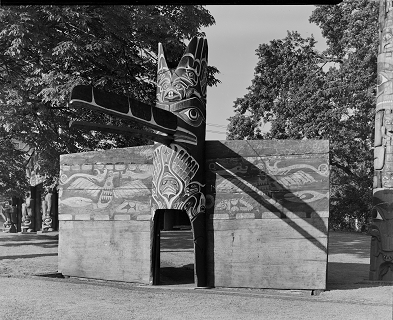
Chief Hemas’s house frontal pole in Thunderbird Park, 1952, when Thunderbird Park was a hodgepodge of different monument carvings from many communities. Incongruously, the boards on either side of the pole are a Nuu-chah-nulth ceremonial screen from Ahousaht. I-29794.
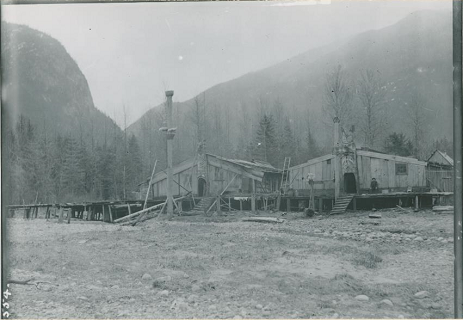
The houses of Chief Snow (Snuxyaltwa) and Chief Hemas with house frontal poles in the Nuxalk village of Talyu, viewed from the beach at low tide in 1913. Charles F. Newcombe photograph, PN10978.

The pole forms the entrance portal of Chief Hemas’s house at Talyu. Charles F. Newcombe photograph, 1913, PN 10978 (detail).
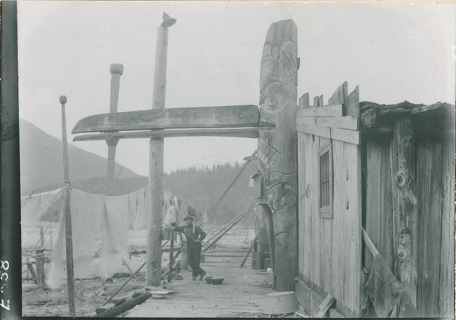
Chief Hemas’s house at Talyu viewed from the side. Charles F. Newcombe photograph, 1913, PN 7174.
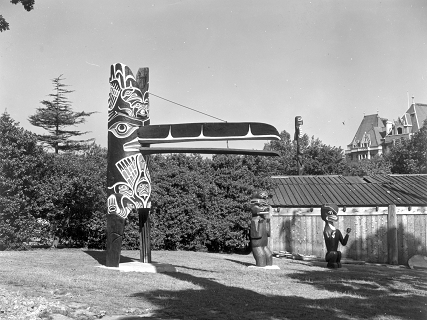
By 1954 the screen from Ahousaht had been moved to inside storage. The two carvings to the right of the pole are memorial figures representing Black Bear and Grizzly Bear, also purchased by Charles F. Newcombe at Talyu in 1913. I-21083.
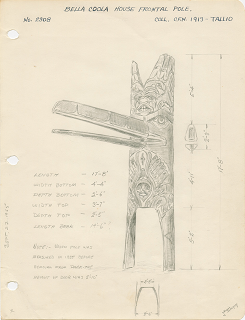
Museum technician John Smyly’s sketch of Chief Hemas’s house frontal pole.
This entrance pole is from the house of Chief Hemas from the Nuxalk village of Talyu. It is one of the monumental carvings that Charles F. Newcombe purchased there on April 3, 1913. He paid $50 for the pole, $5 more than Chief Louie’s house entrance pole, purchased at the same time. Newcombe recorded the carver’s name as Skyuswalus of Talyu and the house name as Raven House.
The main figure on the pole is Raven, the first ancestor of the Talyu people who travelled throughout the coast at the beginning of time and brought all of the Talyu ancestors together at the mouth of the Taleomey River. The design on Raven’s body depicts the Beaver’s body and tail (shown with a face in the centre and a star-like form at the end) and six profile heads, which, in one interpretation, represent Eagles. The image at the bottom of the pole may represent Chief Hemas’s Wolf crest, obtained through marriage from the Wuikinuxv of Rivers Inlet. Part of the design was cut away when the curved door was enlarged. All these images—supernatural beings, birds and animals, first ancestors, human forms—refer to the origins of the chief’s family, how they journeyed, and how they found the place that became their home, their connections and marriages, and their territories. Entering the house, you embrace these teachings; leaving it, you take those teachings with you.
Before it was erected in Thunderbird Park in 1941, the pole was repainted and, at some time in its history, the original beak of the Raven may have been replaced. The pole is now exhibited behind glass near the east entrance to the museum.
Do you have a story to share about this item? Add your voice to the community.